Huiyan Bai
Hyperspectral Remote Sensing Images Salient Object Detection: The First Benchmark Dataset and Baseline
Apr 03, 2025



Abstract:The objective of hyperspectral remote sensing image salient object detection (HRSI-SOD) is to identify objects or regions that exhibit distinct spectrum contrasts with the background. This area holds significant promise for practical applications; however, progress has been limited by a notable scarcity of dedicated datasets and methodologies. To bridge this gap and stimulate further research, we introduce the first HRSI-SOD dataset, termed HRSSD, which includes 704 hyperspectral images and 5327 pixel-level annotated salient objects. The HRSSD dataset poses substantial challenges for salient object detection algorithms due to large scale variation, diverse foreground-background relations, and multi-salient objects. Additionally, we propose an innovative and efficient baseline model for HRSI-SOD, termed the Deep Spectral Saliency Network (DSSN). The core of DSSN is the Cross-level Saliency Assessment Block, which performs pixel-wise attention and evaluates the contributions of multi-scale similarity maps at each spatial location, effectively reducing erroneous responses in cluttered regions and emphasizes salient regions across scales. Additionally, the High-resolution Fusion Module combines bottom-up fusion strategy and learned spatial upsampling to leverage the strengths of multi-scale saliency maps, ensuring accurate localization of small objects. Experiments on the HRSSD dataset robustly validate the superiority of DSSN, underscoring the critical need for specialized datasets and methodologies in this domain. Further evaluations on the HSOD-BIT and HS-SOD datasets demonstrate the generalizability of the proposed method. The dataset and source code are publicly available at https://github.com/laprf/HRSSD.
Content-driven Magnitude-Derivative Spectrum Complementary Learning for Hyperspectral Image Classification
Jul 26, 2024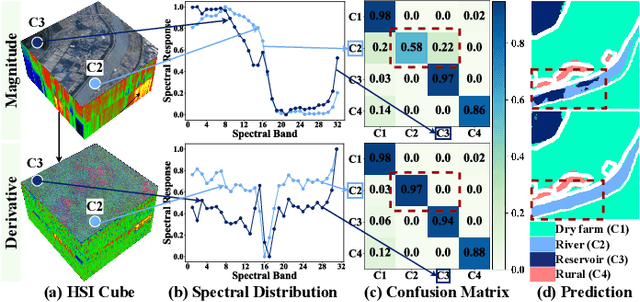
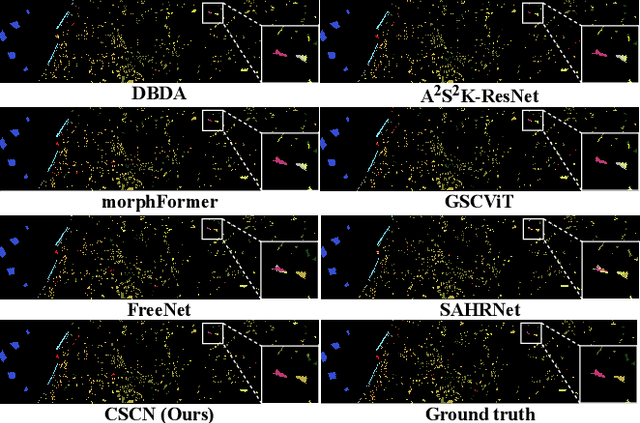
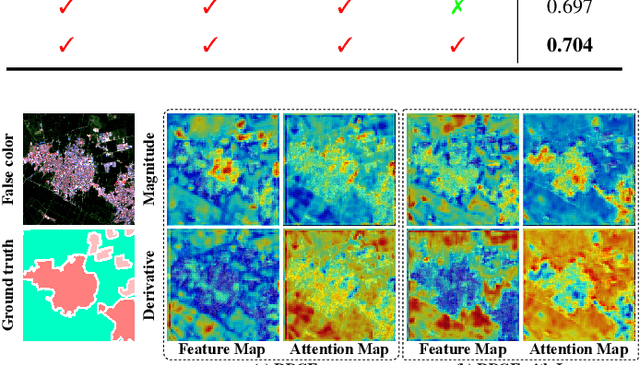

Abstract:Extracting discriminative information from complex spectral details in hyperspectral image (HSI) for HSI classification is pivotal. While current prevailing methods rely on spectral magnitude features, they could cause confusion in certain classes, resulting in misclassification and decreased accuracy. We find that the derivative spectrum proves more adept at capturing concealed information, thereby offering a distinct advantage in separating these confusion classes. Leveraging the complementarity between spectral magnitude and derivative features, we propose a Content-driven Spectrum Complementary Network based on Magnitude-Derivative Dual Encoder, employing these two features as combined inputs. To fully utilize their complementary information, we raise a Content-adaptive Point-wise Fusion Module, enabling adaptive fusion of dual-encoder features in a point-wise selective manner, contingent upon feature representation. To preserve a rich source of complementary information while extracting more distinguishable features, we introduce a Hybrid Disparity-enhancing Loss that enhances the differential expression of the features from the two branches and increases the inter-class distance. As a result, our method achieves state-of-the-art results on the extensive WHU-OHS dataset and eight other benchmark datasets.
Dual-stage Hyperspectral Image Classification Model with Spectral Supertoken
Jul 10, 2024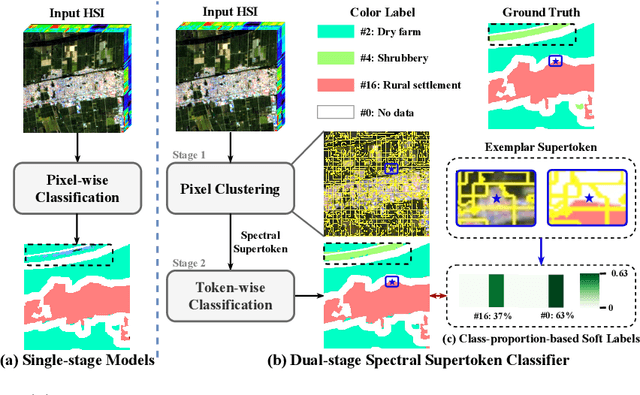

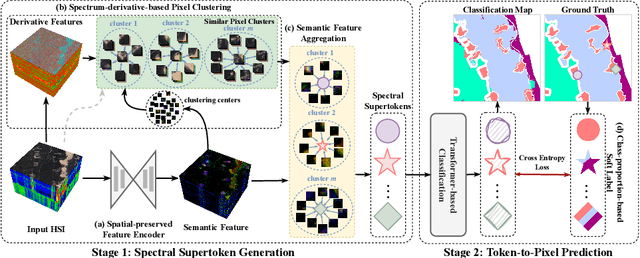
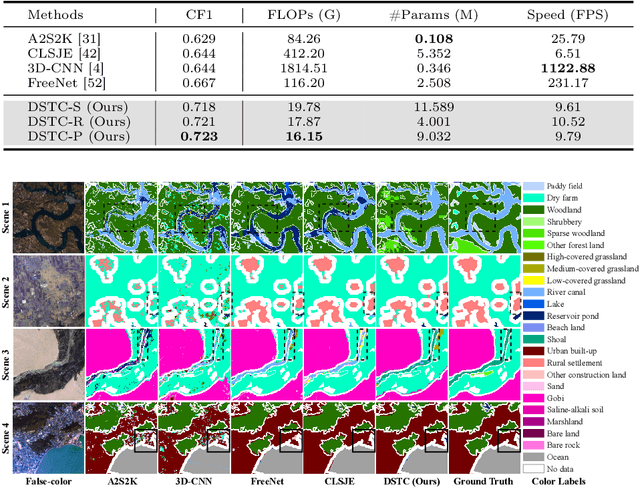
Abstract:Hyperspectral image classification, a task that assigns pre-defined classes to each pixel in a hyperspectral image of remote sensing scenes, often faces challenges due to the neglect of correlations between spectrally similar pixels. This oversight can lead to inaccurate edge definitions and difficulties in managing minor spectral variations in contiguous areas. To address these issues, we introduce the novel Dual-stage Spectral Supertoken Classifier (DSTC), inspired by superpixel concepts. DSTC employs spectrum-derivative-based pixel clustering to group pixels with similar spectral characteristics into spectral supertokens. By projecting the classification of these tokens onto the image space, we achieve pixel-level results that maintain regional classification consistency and precise boundary. Moreover, recognizing the diversity within tokens, we propose a class-proportion-based soft label. This label adaptively assigns weights to different categories based on their prevalence, effectively managing data distribution imbalances and enhancing classification performance. Comprehensive experiments on WHU-OHS, IP, KSC, and UP datasets corroborate the robust classification capabilities of DSTC and the effectiveness of its individual components. Code will be publicly available at https://github.com/laprf/DSTC.
 Add to Chrome
Add to Chrome Add to Firefox
Add to Firefox Add to Edge
Add to Edge